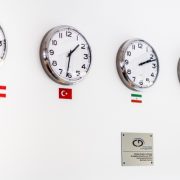Conference info: IEEE LCN
Authors: Jesús Aguilar Armijo (Alpen-Adria-Universität Klagenfurt), Christian Timmerer (Alpen-Adria-Universität Klagenfurt) and Hermann Hellwagner (Alpen-Adria-Universität Klagenfurt)
Abstract: Mobile networks equipped with edge computing nodes enable access to information that can be leveraged to assist client-based adaptive bitrate (ABR) algorithms in making better adaptation decisions to improve both Quality of Experience (QoE) and fairness. For this purpose, we propose a novel on-the-fly edge mechanism, named EADAS (Edge Assisted Adaptation Scheme for HTTP Adaptive Streaming), located at the edge node that assists and improves the ABR decisions on-the-fly. EADAS proposes (i) an edge ABR algorithm to improve QoE and fairness for clients and (ii) a segment prefetching scheme. The results show a QoE increase of 4.6%, 23.5%, and 24.4% and a fairness increase of 11%, 3.4%, and 5.8% when using a buffer-based, a throughput-based, and a hybrid ABR algorithm, respectively, at the client compared with client-based algorithms without EADAS. Moreover, QoE and fairness among clients can be prioritized using parameters of the EADAS algorithm according to service providers’ requirements.
Keywords: Dynamic Adaptive Streaming over HTTP (DASH), Edge Computing, Network-Assisted Video Streaming, Quality of Experience (QoE).












